
Choosing to learn an instrument is a significant decision that can shape your life in meaningful ways. Whether you aspire to play casually or have dreams of becoming a professional musician, the choice of instrument can make all the difference. Save The Music has seen first-hand how the right instrument can ignite a lifelong passion for music in both students and teachers. But choosing poorly can lead to frustration and discouragement. For example, if your dream is to be a rock star, you'll likely be disappointed if you start learning the triangle. Similarly, opting for an acoustic guitar won't help you if your goal is to join a marching band. Therefore, before you hit those keys or strike those chords, it's crucial to find the easiest instruments to learn that align with your goals, lifestyle, and musical ambitions.
Key Factors to Consider
Your Abilities: It's advisable to physically handle a few instruments to understand which one feels most natural to you. Hand size, finger length, and even your sense of rhythm can influence the ease with which you pick up an instrument. You're more likely to stick with it if it feels 'right' from the start.
Your Budget: Costs play a significant role in the decision-making process. While you can find budget-friendly versions of most instruments, some are inherently more affordable. An acoustic guitar or an electronic keyboard are generally less expensive than a saxophone or a drum set, and they have the added benefit of being good instruments for beginners.
Your Goals: Think about the genre of music you're drawn to and what you want to achieve. If you're interested in singer-songwriter styles, a keyboard can serve as an excellent accompanying instrument. For those looking to form a rock band, learning drums or bass guitar would be a better fit. Your end goals should guide your choice between the easiest instruments to learn.
Your Passion: Lastly, your level of enthusiasm for the instrument will undoubtedly affect your learning journey. If you're deeply passionate about the piano, for instance, you're more likely to practice regularly and overcome challenges, accelerating your progress. Choose an instrument that you're excited to learn and play.
Choosing to learn an instrument is a big step, one that can transform your life in profound ways. Save The Music helps students and teachers access instruments, often sparking interests that last a lifetime. But before you start strumming or drumming, it's important to find the easiest instruments to learn that are right for you.
The Top 10 Easiest Instruments to Learn
Our top 10 list of the easiest instruments to learn are arranged with the more difficult and most practical instruments last. As the list progresses, the instruments increase in complexity and become more versatile, offering a wider range of applications in popular and mainstream music.
10. Triangle

Even if you're not a musician, chances are you've struck a triangle at some point in your life—perhaps back in your elementary school music class. And I'm sure it comes to no surprise that it's on a list of the easiest instruments to learn. But while it might look deceptively simple, the triangle is a surprisingly versatile instrument with a history dating back to medieval times. You'll hear it in classical settings like orchestras and chamber music, but also in more modern genres like pop and rock to punctuate rhythm.
What sets the triangle apart is its unparalleled simplicity. Hold one corner and strike it: you’re already making music. But mastering this instrument isn't just child's play. Professional musicians like percussionist Dame Evelyn Glennie have showcased the triangle's unique tonal variations.
Your initial learning experience will be easygoing; the challenge comes when you aim to perfect your strikes for various tones and dynamics. As you progress, you'll find that striking closer to the corner produces a softer tone, while striking the midpoint gives a louder, fuller sound. You could be adding dramatic flair to a classical concerto or jamming in a local rock band—either way, the triangle offers a straightforward yet nuanced introduction to the world of music.
9. Tambourine

When you think of the tambourine, you might picture hippies shaking them at Woodstock, but this instrument has ancient roots, tracing back to Mesopotamia and Egypt. Of course it was also an excellent choice at Woodstock and for newcomers due to its accessibility. It's basically a small drum with jingles—you shake it, and it makes noise.
But the tambourine also has a rich musical landscape; it’s an essential part of everything from church choirs to rock bands like The Rolling Stones. Legendary artists like Stevie Nicks have used tambourines to add an extra layer to their music.
As a beginner, you’ll find it easy to create basic rhythms. The real skill lies in coordinating hand movements to produce intricate patterns. This is an instrument that lets you start simple and grow into more complex rhythms over time. With minimal investment and space, you can make music at home, or take it on the road with a touring band. It’s particularly good for people who want to explore rhythm without diving into complex drum sets.
8. Maracas
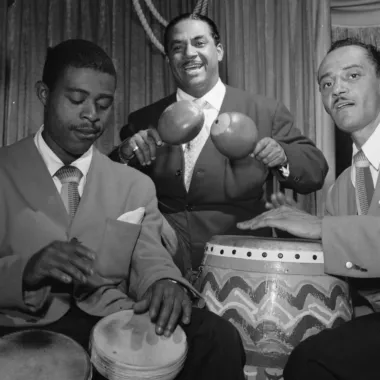
You might associate maracas with festive scenes or Latin music, but these simple percussion instruments have roots that extend back to Native tribes in Latin America. From salsa bands to orchestral pieces, maracas add a unique flair wherever they appear. Rock bands like The Rolling Stones have even incorporated maracas into their music, proving that their versatility spans genres.
But what makes maracas an easy pick for beginners is that you shake them; and that's it. They're probably the most user-friendly of the easiest instruments to learn on this list. However, this doesn't mean they lack depth. The real art is in mastering various shaking techniques to produce different sounds and rhythms. Seasoned performers like Tito Puente have showcased just how complex and vibrant maracas can be when played with skill.
For beginners, a pair of standard maracas will do the job. As you get more involved, you may want to explore ones with different fillings to produce varying sounds. While shaking them might seem straightforward, keep in mind that using too much force can overwhelm other instruments in an ensemble setting. On the flip side, they can bring life to quieter acoustic sessions.
Maracas are a go-to for casual gatherings and also feature in high-energy settings like live concerts and studio recordings. With a little practice, you could be that person in the band who knows how to shake things up—literally.
7. Harmonica
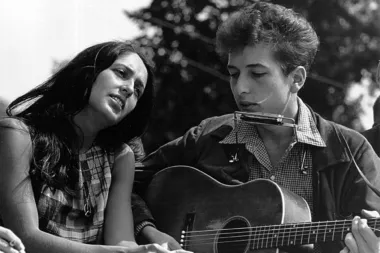
When you think of a harmonica, perhaps blues legends like Little Walter or folk icons like Bob Dylan come to mind. Compact enough to fit into your pocket, the harmonica has been a cornerstone in American music, dating back to the 19th century.
It's incredibly easy to learn—you don't need finger dexterity or lung capacity like with other instruments. Blow or draw air through it and you'll be making music in seconds. Sounds easy, right? It is, but if you're aiming to be the next John Popper of Blues Traveler, be prepared to put in the hours. While you can get away with simplistic tunes early on, mastering bending techniques to get nuanced sounds will take time.
The harmonica's portable nature makes it a great travel companion, so you can practice anywhere. You'll find this versatile instrument in a myriad of settings, from country stages to rock concerts and even orchestral compositions. Watch out for the various types available; a diatonic harmonica is best for beginners, but if you're into jazz or classical music, you might lean towards a chromatic harmonica down the line.
6. Recorder

The recorder is often the first of the easiest instruments to learn that's handed to children in music class, but its roots stretch back to medieval Europe. This woodwind instrument is prevalent in classical compositions, but it's also carved out a niche in folk and contemporary music.
Learning the recorder is almost like a rite of passage. Why? Well, it's affordable, lightweight, and easy to carry. Beginners will appreciate the simplicity of its finger positioning, which makes it less daunting than other woodwinds. You’ll often find it in school ensembles and college bands, but it has also been used by pros like Michala Petri. As you progress, you'll discover that the basic notes are easy, but mastering the upper octave requires breath control and precision.
If you're just starting out, sticking to C major compositions will give you a good foundation. Once you're comfortable, you can branch out into more complex pieces or even join a local ensemble.
5. Ukulele

Don't be fooled by its small size; the ukulele packs a musical punch. Originating from Hawaii, but with roots in Portuguese stringed instruments, the ukulele has found its way into pop culture thanks to musicians like Israel Kamakawiwo'ole and his rendition of "Over the Rainbow."
Its four strings make it less intimidating than a guitar, and its light weight means you can take it almost anywhere. Most beginners find it easy to learn a few chords and start strumming simple songs in just a couple of days.
The Ukulele is extremely popular in folk music, but you'll also find it in rock bands and even in orchestral settings. As you get more advanced, fingerpicking and strumming patterns will present new challenges.
The ukulele can also be a stepping stone to other easiest instruments to learn on our list, like the guitar. From beach bonfires to big stage performances, this little instrument has broad applications. Just remember, not all ukuleles are created equal; start with a soprano or concert ukulele for the easiest learning curve.
4. Percussion Drums
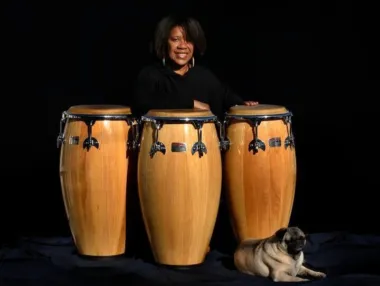
The drum holds a special place among the easiest instruments to learn as one of the oldest instruments known to humanity. Originating from the basic act of rhythm-making, drums have been utilized in various forms across different cultures and ages. Today's drum kit, a 20th-century invention, has evolved into a complex instrument that provides the rhythmical and tonal backbone in many styles of music, from jazz and rock to hip-hop and electronic.
When we talk about legendary drummers, names like Buddy Rich, Gene Krupa, and modern icons like Neil Peart and Travis Barker often come up. These musicians have showcased the limitless potential of drums, taking the instrument far beyond its traditional role. Iconic drum moments are etched into songs like Led Zeppelin's "When the Levee Breaks" and Phil Collins' "In the Air Tonight," spotlighting the drum set as more than just a rhythm keeper but a melody-maker.
Learning the drums might seem daunting but breaking it down to the basics simplifies the process. To start, focus on rudimentary drumming patterns and the essential drum beats. Do not rush into complicated fills or polyrhythms; those can come later. A common mistake newbies make is to neglect their weaker hand or foot—balanced training is crucial for becoming a skilled drummer. An invaluable tip for novices is to practice with a metronome to develop impeccable timing, something even seasoned drummers do regularly.
3. Keyboard
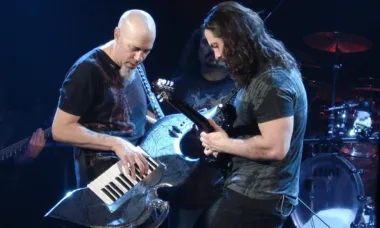
The history of the keyboard stretches way back to the advent of the pipe organ in ancient Greece. As time progressed, the harpsichord came into play during the Renaissance, later evolving into the piano in the 18th century. However, the invention of the electronic keyboard in the 20th century changed everything. It allowed for a myriad of sounds and effects, all contained in one portable device. Today, digital keyboards can emulate everything from a grand piano to an entire orchestra.
Famous musicians who have graced the keyboard range from classical titans like Mozart and Bach to modern legends like Stevie Wonder and Elton John. Different genres have also embraced it; think of the psychedelic keyboards in Pink Floyd's "Dark Side of the Moon" or the jazzy undertones in Herbie Hancock's work.
As for learning, keyboards offer a very straightforward approach. The keys are laid out logically, making scales and chords visually intuitive. Beginners should start with simple melodies and major scales. A common mistake is diving into the synthesizer's complexities—stick to the piano setting initially and avoid overwhelming yourself with all the available sounds and effects.
2. Electric Bass Guitar
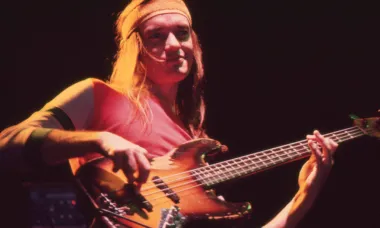
The electric bass was created in the 1930s but didn't gain real traction until Fender mass-produced it in the 1950s. Since then, it has become the backbone of modern music, filling out the low-end in countless genres. The bass guitar you see today, with its cutaway body and electronic pickups, is a far cry from its bulky ancestors. Bass legends like Jaco Pastorius and Victor Wooten have revolutionized the bass guitar, extending its scope way beyond simple background rhythm.
It's difficult to include the electric bass on a list of the easiest instruments to learn because of the extremely difficult techniques the afore mentioned legends have made popular. However, there are many simple bass lines that are very easy to pick up. As a result it's not uncommon to see a guitarist or new musician pick up the instrument for the first time, to help a band in need. So while you may not be covering Flea or playing slap bass lines anytime soon, learning some easy bass lines may be a good option for those looking to play with others soon. And here's a newbie tip: practicing with a drum machine or metronome will help you improve your timing, an essential skill for any budding bassist.
1. Acoustic Guitar

The acoustic guitar's roots can be traced back to medieval Europe, but it's evolved drastically since then. It gained tremendous popularity in America during the folk music revival of the 1960s and has since become a versatile instrument in various music genres. Today, whether you're at a campfire or a concert hall, the acoustic guitar fits right in.
Bob Dylan, Woody Guthrie, and Andrés Segovia are just a few of the many legends who've made iconic music with this instrument. In terms of albums, Eric Clapton's "Unplugged" showcased the acoustic guitar in all its glory, as did albums like "Nebraska" by Bruce Springsteen.
For newcomers, the acoustic guitar is relatively easy to pick up but difficult to master. Beginners should focus on open chords and simple strumming patterns. As tempting as it might be to dive into fingerpicking or complex solos, these techniques can wait. One essential tip for starters is to keep your nails short for easier fretting.
Final Thoughts
Making the right choice among the easiest instruments to learn can be a game-changer. It has the power to not only deepen your love for music but also to add a new dimension to your life. Save The Music has seen countless students and teachers benefit from making informed choices. By carefully weighing your goals, physical comfort, budget, and, above all, your intrinsic motivation, you set yourself up for a fulfilling and enduring musical experience. This isn't just about learning to play notes; it's about creating a meaningful connection with an extension of yourself. So make your choice wisely and prepare to unlock a world of musical potential that you never knew existed.

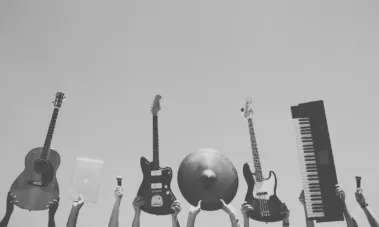
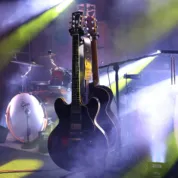
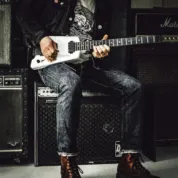

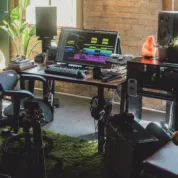
Leave a Reply!
Playing the Bass is the best and has a endless or numerous ways of constantly learning. Either learning from the begininers or how I learned. .
My brother got me a working band. Who practiced in a open bar which I didn't know a single song on Bass. Got yelled at laughed at. Still I hung in there n within 2 months I started up the level ladder playing in front of a full house within my 1st week of learning Bass n I was not a guitar player so it's learning from scratch. I was not
John Paul Jones but I did earn my pay. 23 years I was blessed play Bass n now 37 yrs later I'm learning more now than I ever did. It's more fun n I love.
Jam on Bass.
This is great! Thanks for sharing William. Bass was a big part of my journey as well. Let us know if there's any bass specific content you think would be useful for us to cover on the site.